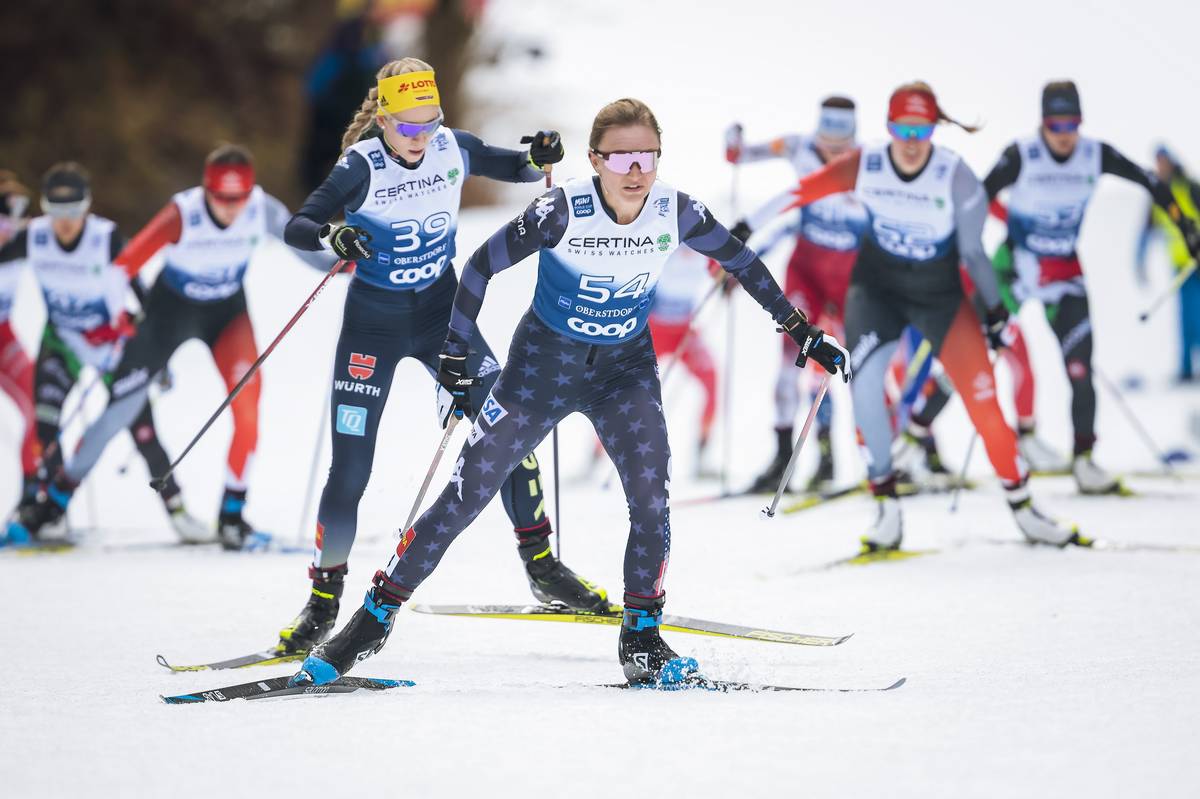
One of the biggest public health challenges worldwide is physical inactivity. As the World Health Organization reported in August, the number of obese children and teenagers has grown by ten times in the last 40 years, and in five more years there may be more obese children than underweight children in the world.
As a result, there’s a lot of interest in how to motivate people to take part in physical activity. As we wrote about earlier this fall, that includes a study of American Birkebeiner participants which found that participating in group-based exercise provided an important extra bit of motivation even for people who were quite self-motivated to exercise or train.
Another piece of the picture was examined in Finland. There, researchers had the opportunity to use a study of twins to disentangle the genetic and environmental contributions to people’s motivation to do physical activity in their “leisure time.”
“In classical twin studies, we compare a resemblance within pairs of identical twins to the resemblance within pairs of fraternal twins,” Dr. Sari Aaltonen, the lead author on the study which was recently published in the Scandinavian Journal of Medicine & Science in Sports (but is behind a paywall), wrote in an email. “For instance, if identical twins are more similar than fraternal twins, then genes significantly influence that trait. If the correlations for fraternal twins are equal to those for identical twins, then shared environmental influences (e.g., childhood home environment, if the children were raised together) are indicated to have influence that trait.”
Using this framework, Aaltonen and colleagues in Helsinki and Jyvaskyla, Finland, and in Amsterdam, the Netherlands, worked with 1,271 pairs of twins in their early and mid 30’s. They gave each twin a survey to assess how much each of eight different dimensions of motivation contributed to the reasons they exercise.
In that part of the study, three of these dimensions turned out to be most highly rated by the twins as reasons why they exercise. One was physical fitness, the next psychological state, and the third enjoyment of sport.
Then using genetic twin modeling, the researchers inferred how “heritable” each of these different types of motivation was. Heritability is an estimate of the proportion of variation in trait, in this case the source of motivation, which is controlled by genetic variation. In a perfectly heritable trait, 100% of the variation is controlled by genes inherited from the parents. In a completely non-heritable trait, genes have no influence and instead the environment or other factors control how the trait is expressed.
“In general, we know that the most of human phenotypic traits are complex traits; both genetic and environmental factors influence them,” Aaltonen wrote. “Our heritability estimates of the motives for physical activity have ranged between 13% and 53%.”
That’s a wide range. The paper gets into which sources of motivation are more heritable than others. For example, “others’ expectations”, “mastery” (improving one’s skills or abilities), “competition/ego”, and “physical fitness” were all highly influenced by environment. For these dimensions of motivation, around 80 percent of the variation in people’s assesment of their importance was driven by environment, rather than genetics.
Even for the more heritable dimensions of motivation, environmental factors were still clearly important. In the most highly heritable source of motivation, “enjoyment”, with 33 percent of the variation in men and 53 percent of the variation in women being explained by genetics influences.
“Enjoyment is a strong intrinsic motive, which means that a person is motivated to be physically active because she or he finds it pleasant, fun and/or satisfying,” Aaltonen wrote. “When people are intrinsically motivated, they follow their innate needs and interests. Therefore, it may not be surprising that ‘enjoyment’ was found to be the most heritable motive dimension in our study.”
Similarly, in a study in the Netherlands, lack of enjoyment was found to be moderately heritable in men – that is to say, for those who really hated exercise, environment didn’t do much to affect that.
“Previous animal studies (mainly in rodents) and human studies suggest that there may be a biological regulation in terms of the motives for physical activity,” Aaltonen added.
The next most heritable source of motivation was “affiliation”, defined as “be with friends and/or do activity with others,” with 39 percent of the variation in men and 35 percent of the variation in women being explained by genetic influences.
How can heritability be different between men and women – aren’t genes passed on in the same way? Aaltonen explained.
“Generally, the heritability estimate is always time-, age-, population specific and, above all, it is an estimate of the genetic influences to individual differences on a population level, not an estimate pertaining to a single individual,” she wrote, explaining that all the variation can be partitioned into either genetic or environmental sources, so a high heritability estimate can simply mean that environmental influences exist, but that they are not so important in terms of determining the trait. “The high heritability estimate for enjoyment in women, for example, means that women’s enjoyment as a motive factor for leisure-time physical activity is less affected by environmental influences.”
“Why environmental factors are less important for women’s, but more important for men’s enjoyment to exercise in Finnish adults in their mid-thirties?” she mused. “Right now, I don’t have an answer for that. Based on our quantitative genetic results, we are not even able to reveal what the specific genes or environmental factors are that cause the difference between men and women. In terms of clinical implications, physical activity-promoting measures that try to motivate people to exercise may be even more important for men than for women, because of the greater role of environmental influences in men.”
That was just one of the insights that the researchers gained about how public health efforts could be targeted for success in motivating people for physical activity.
For example, physical fitness and enjoyment were both highly-ranked sources of motivation, but the former was determined more by environmental factors – and thus may be easier to affect by intervention – while the other was fairly heritable, controlled by genetics rather than a person’s surroundings or interactions.
“Several studies have suggested that extrinsic motives (for example, you want to be fitter than others, you exercise only because someone told you to do so, etc.) could be dominant during the early stages of exercise adoption, but that intrinsic motives (enjoyment and the satisfaction of exercise) would be more important for progression to and long-term maintenance of activity,” Aaltonen explained. “In other words, it may not be that difficult to get people to be motivated to exercise, but a challenge is to get them continue the activity habit. It helps if you enjoy it.”
“Due to this, a key issue may be to find a physical activity habit that is the most enjoyable for you,” she continued. “Then, you may better be able to stick to your activity routines also when you have a lack of motivation.”
Chelsea Little
Chelsea Little is FasterSkier's Editor-At-Large. A former racer at Ford Sayre, Dartmouth College and the Craftsbury Green Racing Project, she is a PhD candidate in aquatic ecology in the @Altermatt_lab at Eawag, the Swiss Federal Institute of Aquatic Science and Technology in Zurich, Switzerland. You can follow her on twitter @ChelskiLittle.



